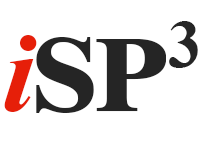What’s Possible in Release 22?
Last week we featured the details about the new naming methodology for JD Edwards EnterpriseOne with Release 22. Here are just a few examples of how Release 22 automates, optimizes, and transforms EnterpriseOne processes.
Supplier Discount Automation
This process increases savings and optimizes spend. It’s beneficial for those who are making at least a million dollars in vendor payments each year, with half of those payments eligible for a discount. Release 22 helps facilitate and translate significant savings. It maintains the Supplier Catalog by reacting to market conditions as they change with mass updates of base prices and effective dates. The Item Number filter simplifies the supplier catalog search. When creating Purchase Orders, you can automate the capture of basket, order, and volume discounts for efficient and accurate price calculations. The role-based pages provide a dashboard to focus on order activity and PO Approval Mobile Applications are handy for approving or rejecting purchase orders. You can also review order history and associated discounts to optimize future purchasing decisions.
More Efficient Requirements Planning
This helps with streamlining your CRP, MPS, DRP, or MRP processes. The Visual Bill of Material and Where-Used diagram allow for better data accuracy while the Copy Bill of Material by Branch makes it easier to add new manufacturing facilities. Capacity and Production Planning is automated and simplified. You can freeze work orders to eliminate unwanted action recommendations. Planning Summary provides planners and buyers visibility to urgent action messages and the Planning Console provides an interactive, supply/demand interface reducing time to action.
Automating Processes with Orchestrator
Orchestrator is all about rethinking how you do business. It optimizes human work, automates tedious tasks, and builds value. It all starts with creating a process, which you can record and capture the steps of the process by simply using the application. Orchestrator is for both technical and nontechnical users and when deploying the process, it allows the creation, sharing, automation, and securing of user defined objects. When you launch a process, the Scheduler provides an easy user interface that defines and activates scheduled automations. The simplest way to alert and act are via One View Watchlists and you can automate messages and workflows. There is still human interaction with orchestrations as you monitor processes and debug exceptions as well as build error-handling and notifications into the process.
Extending the User Experience Without Customizations
To optimize productivity, JD Edwards is trying to limit the need for customizations. Reducing customizations empowers you to adapt JD Edwards to your needs while at the same time not being bothered with the overhead created by doing customizations. With Release 22, you can implement what you need without having to write code or worry about how a customization carries forward with application and tools updates. E1 Page provides access to the most used tasks and E1 Search removes the need to access multiple applications. When looking at EnterpriseOne from a UI perspective, Form Personalization enables the remove fields for a streamlined application. Utilizing Form Extensibility facilitates the capture of additional information while Query retrieves data for a specific user or process. In order to meet market and industry needs, Logic Extension can help provide new business rules with specific requirements.
Transform to Continuous Adoption
With all the cumulative values and feature functionality enhancements, it can come across as a large effort for customers to get from where they currently are to be able to take advantage of the innovation and get value out of JD Edwards. However, this is where continuous adoption comes in. Customers that have 24/7 businesses can't afford for their users to be kicked off the system every time you have to deploy a package for EnterpriseOne. Continuous adoption eliminates that need. Coupled with continuous innovation and the reduction of customizations, customers can get to Release 22 quite easily. A Simplified Upgrade to 9.2 reduces the time and effort of a past upgrade and One Click provides a code current target. Update Manager streamlines patch evaluation, impact, insight, and automation. Object Usage Tracking monitors utilization. Compare Tools accelerates retrofitting while Assertion Framework reduces testing efforts. Most importantly, Zero Downtime deploys innovation without impacting availability.
If you’re interested to discover more ways that you can take advantage of the latest Release 22 updates, please don’t hesitate to contact us.

Comments are closed.